It’s not easy to leave your furry friend to a pet sitter, even for a while, when you go on vacation or work. Your pet may feel anxious when you’re away, let alone meeting a pet sitter he/she has never seen before.
It’s pet sitting separation anxiety, and you can help your pet get over it.
We’ve got a practical guide for you to help your pet and yourself manage pet separation anxiety.
We’ll also give you some great strategies to make your furry friend feel relaxed and happy during pet sitting and afterward.
Let’s have a paw-some time together and give your pet friend the support he/she deserves.
What Is Pet Separation Anxiety?
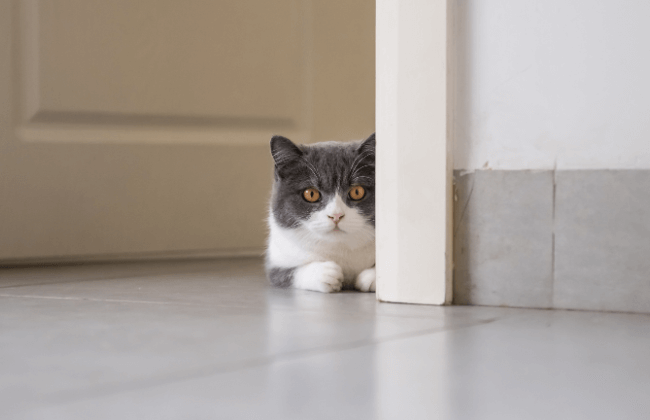
Pet separation anxiety is when pets get anxious and upset. It mostly happens when they are away from their owners or familiar places.
Separation can cause your pet to feel restless, drooling, trembling, panting, and trying to escape. An anxious pet can even show physical illness like vomiting and potty accidents.
Signs of Stress and Anxiety in Pets
Understanding the signs of separation anxiety in your pet will help you console him/her easier. Here are the common symptoms that may suggest your pet has separation anxiety:
- Physical Symptoms: Physical signs can be as subtle as restlessness to as worse as vomiting or diarrhea due to stress.
- Potty/Urination: If your pet urinates or defecates indoors, especially in your absence, it might be a sign of distress.
- Frightened/Hiding: If you’ve been away from a pet too attached to you, he/she can get scared. Your pet can start hiding from people. He/She can also get dilated pupils.
- Excessive Grooming: Even though grooming is usual for pets, excessive licking or grooming can be a sign of stress.
- Excessive shedding: Pets with anxiety may develop skin irritation, shed more than usual, and scratch a lot.
- Not Eating: A distressed pet often loss appetite and can get so distracted from eating that his/her favorite treat won’t excite him/her.
Are you seeing these symptoms unusual to your pet after a separation? Maybe it’s time for comforting your pet.
We’ll talk about how you can do that just in a moment. But before that, let’s get to know what type of anxiety your pet has.
Types of Separation Anxiety
Managing pet separation anxiety can be easy. But only if you know what your pet is going through. Here’s how your pet might be feeling anxious:
Separation Anxiety From Pet Owner
You share an emotional bond with your pet, right? So, he/she feels lonely when you’re not around. This is the separation anxiety from the pet owner, which is you, the parent.
Consoling, caring, and offering toys and favorite treat can help your pet adjust.
If you have to stay away a lot, be patient and caring. Your pet will get used to being apart gradually.
Separation Anxiety From Pet Sitters
When your pet stays with a pet sitter, he/she might develop a bond with the sitter.
If you get the pet back from the sitter after a while, they might also show signs of being upset.
You can give them their favorite toys, a good treat, or something that smells like you.
This will help your dog, cat, rabbit, bird, or any pet feel comfortable again at home and less anxious as he/she regains a bond with you.
Reasons Why Pet Separation Anxiety Happens (Backed by Research Data)
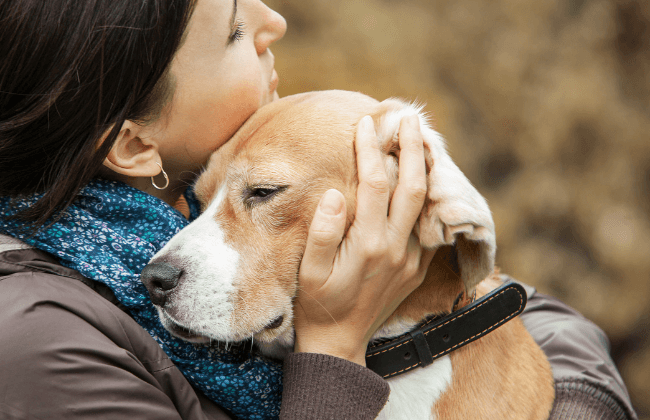
There are several reasons that attribute to pet separation anxiety. It’s crucial to effectively addressing and managing this condition. Here are some common reasons:
Attachment to the Owner
Pets with a strong bond with their owners. They are more susceptible to separation anxiety when separated from their owners. It’s more common when your pet is sick, says Four paws.
Change in Routine
Irregularity in the daily routine can cause anxiety. Example can be leaving the pet with a pet sitter or a pet boarding.
Traumatic events can increase separation anxiety by 83%, says Applied Animal Behavior Science.
Be it a dog, cat, bird, rabbit, turtle, Guinea pig, hamster, ferret, or any other pet, if the regular routine changes, things will be tough for him/her.
Past Trauma or Abandonment
Pets with past traumatic events, such as abandonment, are more prone to developing separation anxiety.
Traumatic experiences when alone, like loud noises, can contribute to separation anxiety in pets, too.
Isolation and Loneliness
Studies show, around 80% of dogs have a spike in stress hormones when left alone. Lack of socialization or spending long hours alone can contribute to anxiety and distress in pets.
Environmental Changes
Moving to a new location or significant changes in the pet’s living environment can trigger separation anxiety.
Residence changes can significantly trigger separation anxiety, says ASPCA.
How Pet Owners Can Help Manage Separation Anxiety
As the pet owner, you will play a vital role in managing pet sitting separation anxiety. Here are some ways to help reduce your pet’s anxiety:
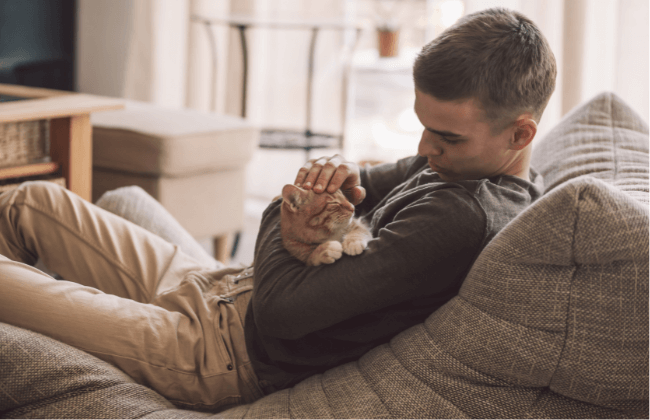
1. Be Calm And Caring
After your pet has separation anxiety, be calm and caring while approaching him/her.
Better if you prepare and train the pet before separating in the first place.
Start with brief intervals of 5–10 minutes, and then gradually lengthen the period of distance.
2. Create a Safe Space
Make a cozy and secure spot within your house for your anxious pet to find solace. Don’t let other pets move around and make noises.
Giving your pet his/her favorite toys, bed, and blanket will make the area more comfortable.
3. Use Calming Techniques
There are a number of calming techniques that you can use to help ease your pet’s anxiety, such as:
- Playing soft music
- Using calming pheromone diffusers
- Giving your pet a massage
- Giving your pet a calming treat
Consistency is key in finding the best technique for your pet’s needs.
4. Reward Based Positive Training
Train your pet every day with specified tasks for a period of the day. You can offer a reward for completing the tasks.
Offer toys that the pet loves already. Avoid introducing toys he/she doesn’t like. This helps pets form a positive connection while alone.
5. Special Treat/toy
Most pets have a favorite food and toy. As the pet owner, your best chance to make your furry friend rejoin the fun is by giving her/him a special treat.
You can bring a toy your pet loves the most or give the food he/she loves to have while at home. This way, you can quickly get him/her in your zone, leaving the anxiety behind.
How Pet Sitters Can Help Manage Separation Anxiety
If you’re a pet sitter, comforting the pets you’re caring for is essential. You can help the pet not to trigger separation anxiety. Here are some helpful ways to ease them:
1. Build a Bond and Stick to a Routine
Spend quality time with the pets to build trust. Create a daily routine that resembles their usual schedule.
Playing, walking, and petting can strengthen the bond. It will help them feel more at ease in their new surroundings.
Also, have a consistent daily routine for feeding, walking, and playtime. It will reduce their anxiety as the pet knows what’s next.
2. Provide Familiarity and Comfort
Surround the pet with their beloved toys, blankets, or bedding. It creates a comforting atmosphere and helps them get along with the unfamiliar surrounding.
You can create a soothing environment for the pets by using calming music or aromatherapy.
3. Engage in Play and Exercise
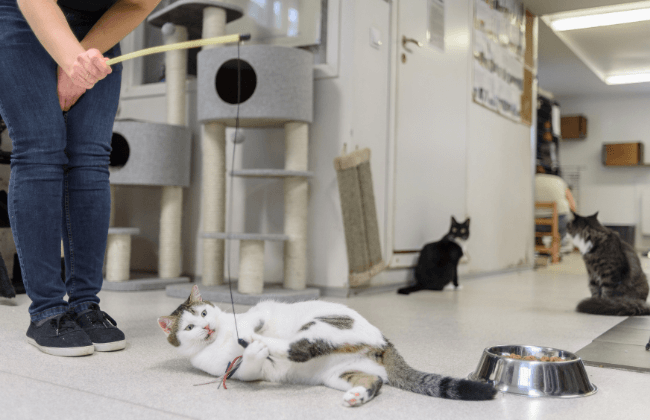
To help the pets get a positive experience, keep them mentally and physically active. This will divert their attention from anxiety.
Engage in fun activities like fetch and hide-and-seek, and go out for walks, runs, or hikes. It is a great way to keep your pet active and healthy and to create a bond with them.
4. Reduce Boredom With Dopamine Boosters
Your pet may also feel anxious because of boring activities. Do what your pet likes instead of the usual routine. It will work as a dopamine booster.
It can be a tasty treat, a hangout, or playing games. These will make your pet happy and reduce boredom to fight separation anxiety.
5. Medications For Mild Separation Anxiety
Sometimes, the pet may frequently urinate, destroy house soil, or be restless because of medications. If your pet is on any medication, you can contact your veterinarian for a treatment.
Also, there are pet medications for anxiety that can help your pet tolerate separation. You can even go for pet CBD for separation anxiety. But, be sure to do that after consulting a veterinary doctor.
Pet Sitter Tips for Caring for Anxious Dogs
Looking after a nervous dog takes love, patience, and a bit of extra effort. Start by working out what makes them anxious loud noises, strangers, sudden changes, etc, and try to minimize their exposure to those triggers.
Having a consistent routine for meals, walks and bedtime helps them feel safe and secure. Let them come to you when they’re ready rather than forcing interaction. Speak softly, and offer gentle reassurance and comfort with their favorite toy or blanket.
Exercise and playtime can work wonders for stress. Reward calm behavior with treats and praise to build their confidence. If needed, consider using anxiety relief tools like calming treats or snug-fitting vests to help them feel more at ease.
How to Manage Separation Anxiety as a Pet Owner
Here’s how you help yourself as a pet parent if you’re getting separation anxiety yourself:
Choose a Reliable Pet Sitter
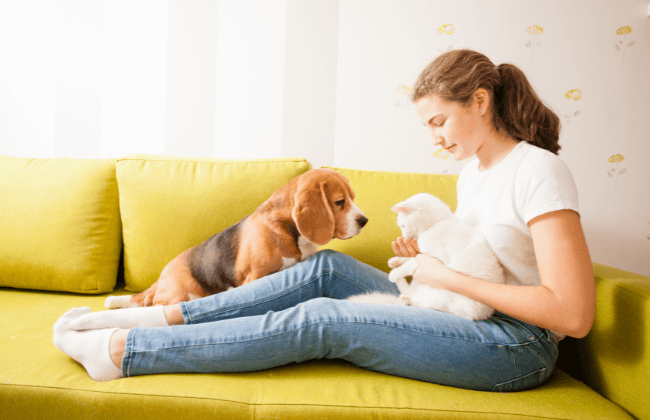
The best thing you can do to stay relaxed during a separation is choosing a reliable pet sitter.
The right pet sitter will keep your pet cheerful while you’re away. Experienced pet sitters also know that each pet is different and to be treated differently.
If you’re looking for a reliable pet sitting service in the UAE, Pawland is Dubai’s best pet-sitting service.
Pet sitters at Pawland know how to keep pets from separation anxiety the right way.
Be Cheerful
Stay cheerful while leaving or coming back home after separation with your pet. This will give your pet a sense of relaxation.
Pets sense our emotions. Being cheerful will help them feel easy and safe.
Stay Calm and Positive
Be calm while your pet is away from you. Make sure you’re choosing the best pet sitter to take care of your pet while you’re away.
Stay positive that nothing wrong is going to happen. Know that your pet is getting the care the way you’d provide.
Stay Connected with Your Pet Sitter
Ask your pet sitter for updates on your pet’s well-being. Knowing they are in good hands will ease your worries.
You can also use a pet camera and check on him/her regularly while away.
Calming Techniques for Dogs, Cats & Small Pets
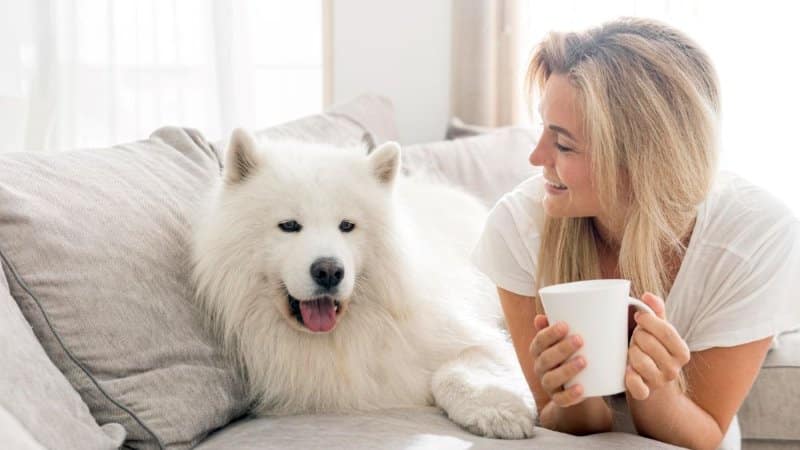
Pets get anxious from loud noises, travel, or new environments. Here are simple ways to calm them.
- Create a Safe Space: Set up a quiet space with their favorite bed or blanket. They feel safe.
- Use Calming Scents: Lavender and chamomile scents can calm pets. Use pet-safe sprays or diffusers.
- Play Soft Music: Classical or calming pet music reduces stress and creates a peaceful atmosphere.
- Gentle Touch & Massage: Slow, gentle petting or a light massage calms anxiety and bonds you.
- Provide Mental Stimulation: Puzzle toys and interactive games distract from stress and keep them busy.
Wrap Up
If you’re worried about your pet feeling anxious when you’re not around, don’t fret! Follow the guides above, be patient and caring, and the anxiety will go away.
We’re positive that you’ll do great with your pet next time you’re away. Wishing you a happy and stress-free time for your furry friend during pet sitting and beyond.
Don’t forget to speak your heart if you have anything to know about or have any questions. Our pet experts here at Pawland will help you get through this. Your pet’s wellness feeds our passion.
Frequently Asked Questions
Yes, it is common for pets to have separation anxiety. Although it’s common in dogs and cats, other pets like birds, fish, hamster, etc., also can feel anxiety from separation.
Separation anxiety is more common if pets are left alone. It’s hard for pets to cope without their owner or familiar places and faces.
The time varies based on the pet's personality and experiences. Some pets adjust quickly in a few days.
Others may take weeks to recover. As a pet owner, your best chance is to look for signs of anxiety, provide lots of care, and be patient.
Know these things while choosing a pet sitter:
- Consider their experience with animals.
- Ask for recommendations from friends and other pet parents
- Make sure they have a good track record of caring for pets.
We’ve got a dedicated guide on how to choose the best pet sitter if you’re interested.
Leaving TV or radio can provide background noise and companionship for some pets. Monitor your pet's response to see if it helps reduce anxiety.
The duration of cat separation anxiety varies, but it typically lasts from 5 to 10 days. It lasts as long as the cat feels anxious due to separation from the owner or a familiar environment.
Yes, pet parents can also experience separation anxiety from their pets. This can happen, especially if they share a strong bond and reliance on each other's presence.
Yes, pet cameras can help with separation anxiety. It will help you monitor your pet and provide reassurance.
It’s common to have separation anxiety in pets when you’re away. You can consider getting a camera if you’re often away from your pet.
Yes, a pet sitter can help reduce separation anxiety in dogs by providing companionship, maintaining a familiar routine, and offering comfort when you're away, which can ease their stress and help them feel more secure.
The time you can leave a dog at home depends on their age and temperament but generally, dogs shouldn’t be left alone for more than 4-6 hours. Puppies and older dogs may need more frequent breaks, adult dogs can handle a bit longer. Always make sure they have access to food, water, and a safe space when you’re away.



